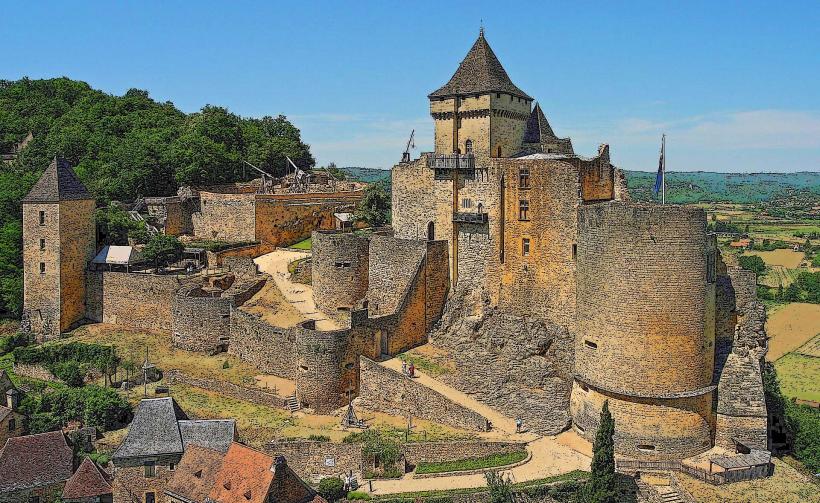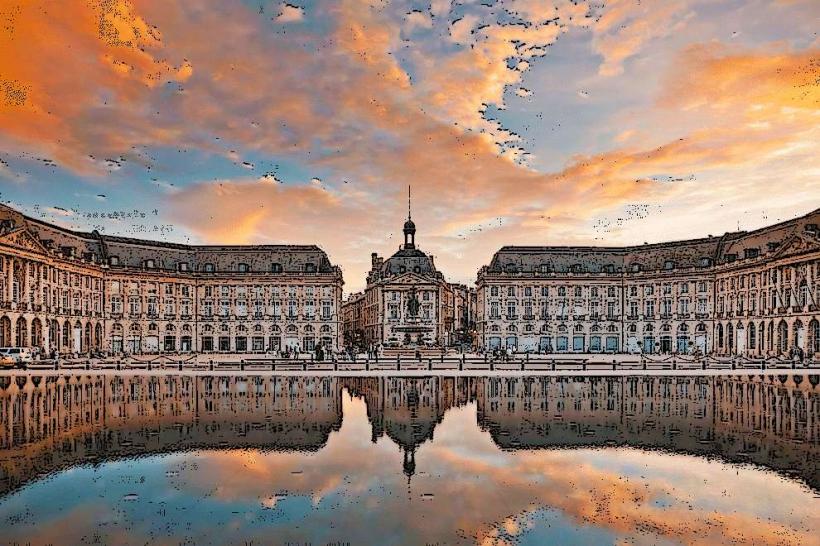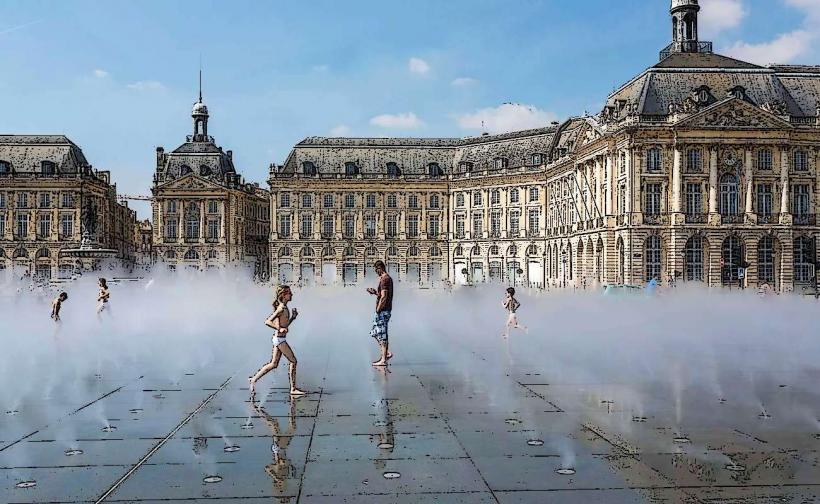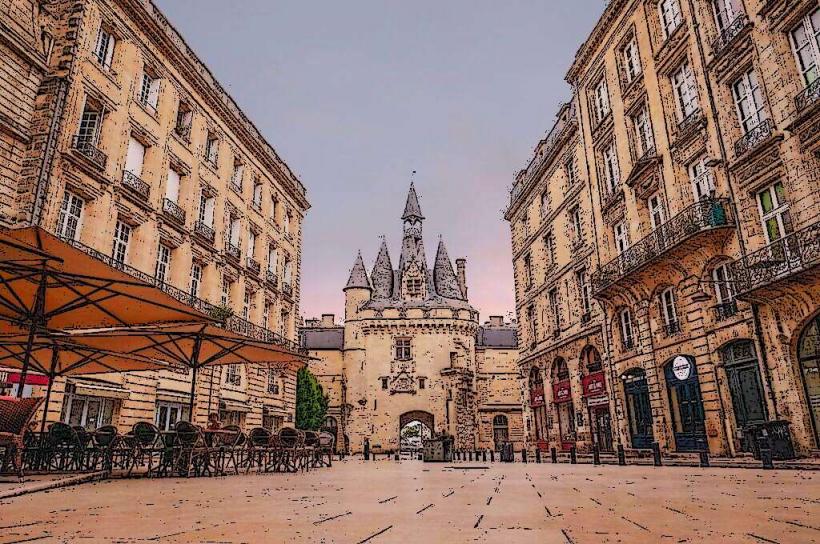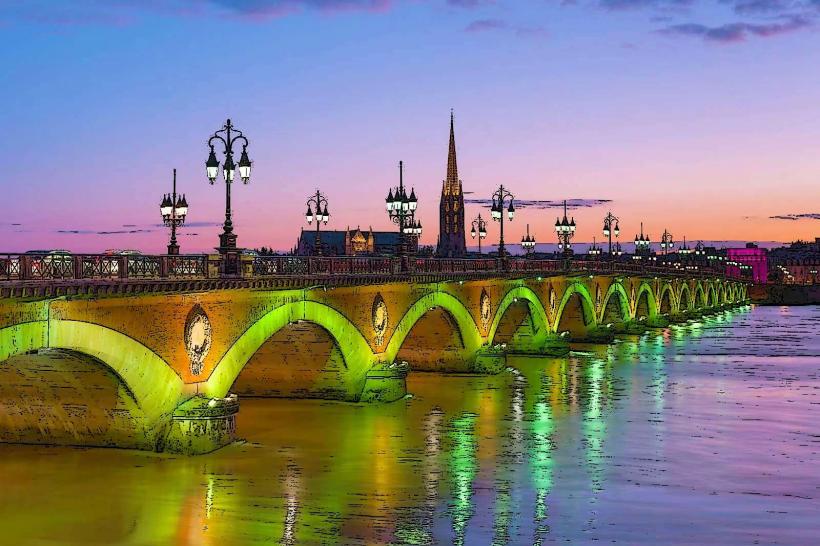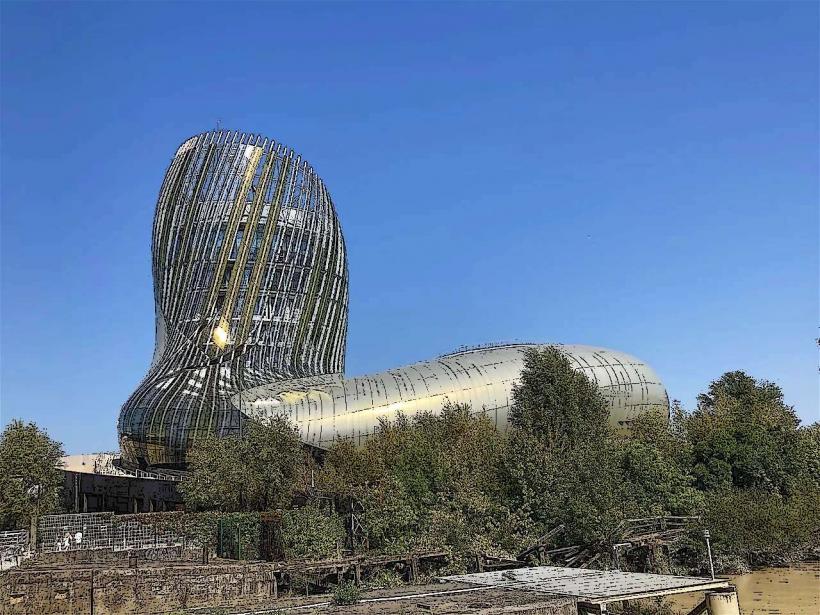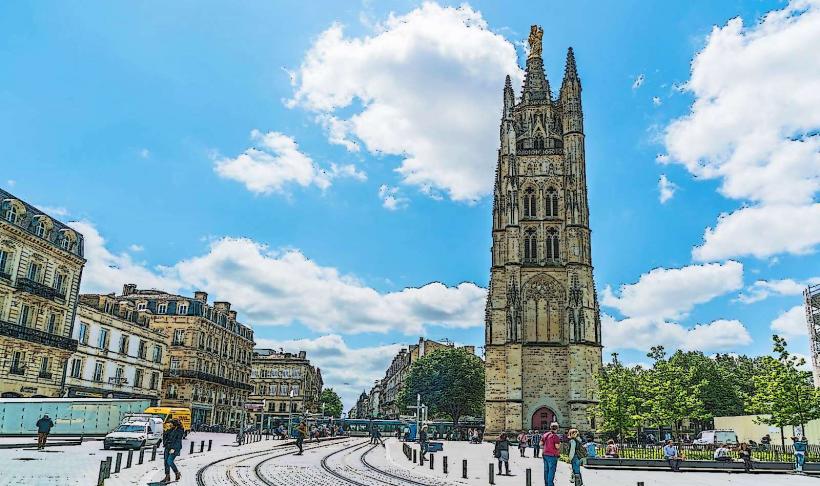Information
Landmark: Grand Theatre of BordeauxCity: Bordeaux
Country: France
Continent: Europe
The Bordeaux Grand Théâtre (Grand Theatre of Bordeaux) is one of the most iconic landmarks in the city, an architectural masterpiece and a significant cultural venue. Located in the Place de la Comédie in the heart of Bordeaux, this theater is an excellent example of 18th-century classical architecture and is recognized as a UNESCO World Heritage site.
1. Historical Background
Construction and Design: The Grand Théâtre was commissioned by Louis-Victor de Rochechouart, the governor of Guyenne, and was designed by the renowned architect Victor Louis in the late 18th century. Construction began in 1773 and was completed in 1780.
Inspiration and Architecture: The theater is inspired by the classical Greek and Roman styles, with a strong neoclassical influence. The design reflects the grandeur and elegance of the era, making it one of the most important examples of French neoclassical architecture.
Opening: The Grand Théâtre was inaugurated in 1780, and its opening performance was attended by an elite audience, marking its place as one of the leading cultural institutions in Bordeaux.
2. Architecture
Exterior:
- The theater's façade is grand and impressive, consisting of a colonnade of 12 Corinthian columns, which serve as the central feature of the exterior. These columns are topped with a pediment that features sculptures symbolizing the arts, reinforcing the cultural significance of the building.
- The columns are arranged symmetrically, and the exterior is characterized by its elegant stonework, creating a sense of opulence and grandeur.
Interior:
- The interior of the Grand Théâtre is equally magnificent, with an elegantly designed main hall and a stunning chandelier. The building can seat up to 1,100 spectators.
- The ceiling is adorned with decorative paintings and intricate plasterwork, contributing to the overall aesthetic of refined beauty.
- The stage is expansive, and the theater is designed to host opera, ballet, and other large-scale performances. It has been the venue for numerous world premieres, particularly in the 18th and 19th centuries.
3. Theatres and Performances
Cultural Significance: The Bordeaux Grand Théâtre has long been a hub of cultural life in the city. It is the main venue for the Opéra National de Bordeaux, which stages a variety of opera performances throughout the year, from classical to contemporary works.
Performances: The theater is also used for ballets, concerts, and various other performing arts events. It’s an essential part of Bordeaux's cultural calendar, offering a wide range of performances that attract both locals and tourists.
Renovations and Restorations: Over the years, the Grand Théâtre has undergone several restorations to preserve its original splendor. The most significant restoration took place in the late 19th century, after a fire caused some damage to the building. More recently, the theater has been modernized to improve acoustics and visitor comfort, while still maintaining its classical charm.
4. Cultural and Architectural Importance
UNESCO World Heritage Site: The Bordeaux Grand Théâtre is part of the city’s historic center, which has been designated a UNESCO World Heritage site since 2007. The theater’s cultural, historical, and architectural significance contributes to Bordeaux’s reputation as a city with rich artistic and architectural heritage.
Victor Louis’ Legacy: Victor Louis, the architect, was renowned for his designs of other important theaters in France, and the Grand Théâtre of Bordeaux remains one of his masterpieces. It has influenced the design of other opera houses in Europe and is admired for its aesthetic harmony and attention to detail.
5. Visiting the Grand Théâtre
Tours: While performances are the highlight of any visit, guided tours are available for those interested in exploring the theater’s history, architecture, and the cultural events that take place there. Tours typically include the main auditorium, the stage, the upper galleries, and the backstage areas, providing a behind-the-scenes look at this historical landmark.
Accessibility: The Grand Théâtre is centrally located, making it easily accessible by foot or public transport. Its proximity to the Place de la Comédie and other major landmarks in Bordeaux makes it a must-see site for visitors.
6. Conclusion
The Grand Théâtre of Bordeaux stands as one of the finest examples of neoclassical architecture in France and remains a focal point of the city’s cultural life. Its grand design, impressive interior, and historical significance make it a key landmark for visitors and an enduring symbol of Bordeaux’s dedication to the arts. Whether you're attending a performance or simply admiring the architecture, the Grand Théâtre is a must-visit destination for anyone in Bordeaux.



